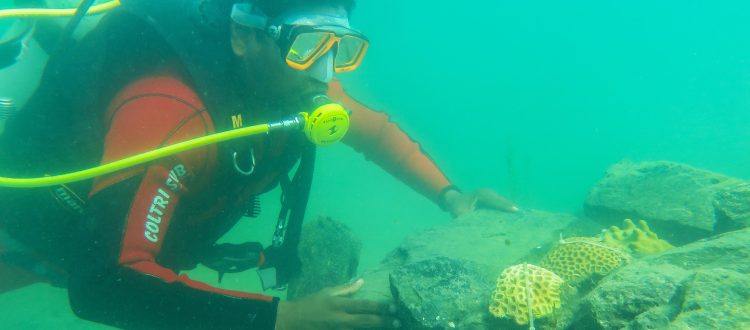Mithapur Coral Reef Recovery Project: Science, people and conservation
When I first got the chance to work in the Wildlife Trust of India’s (WTI) ‘Coral Project’ stationed in Gujarat, I was thrilled not only to get the opportunity to do what I love the most –scientific research but also the chance to meet new people and make new friends. After all, Gujaratis are known for their hospitality. However, what I was not prepared for, was the fishing community’s apprehensions towards the project and its staff. At that time, Mr. Siddik Adam Jadiya or Siddik bhai, as I call him affectionately, was the only person who expressed his support of our work. He was the first member of the fishing community to join hands with WTI. According to Siddik bhai, fishermen of the region were wary of the project as they thought it might result in restricting their livelihood.
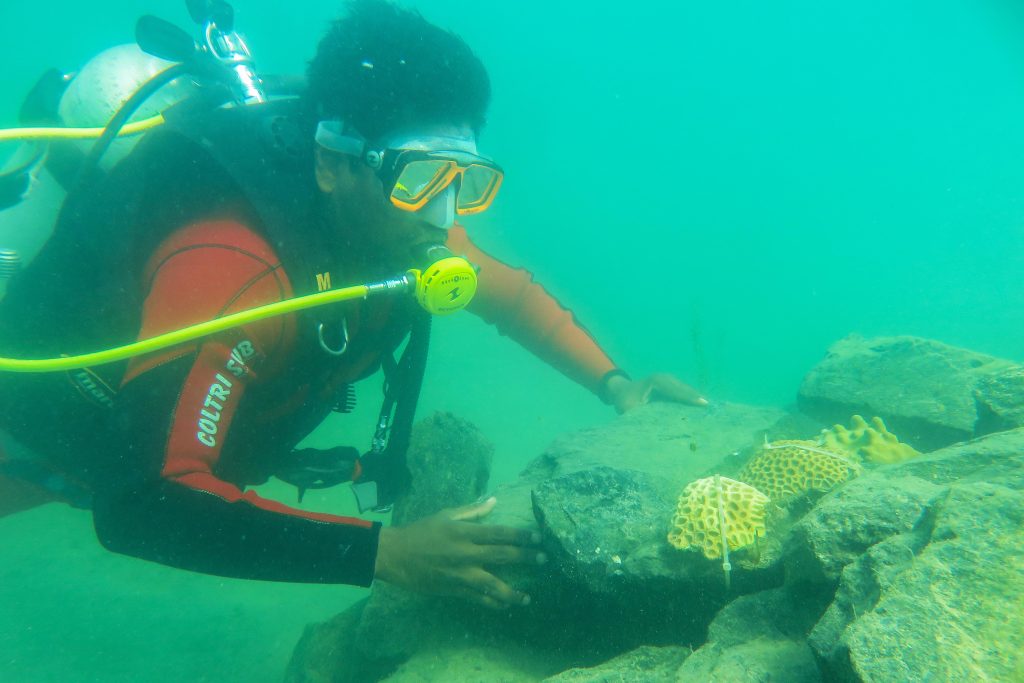
B.M. Praveen Kumar Setting up the coral garden | Photograph by Charan K Paidi/WTI
Thus, guided by my superiors and armed with my little experience of working with the communities in the past, I set out to convince the fishers about the positive changes that our project might bring into their lives. It took several consultation meetings with community heads, with the help of officials from Govt. agencies such as Fisheries and Forest Departments to gain their trust and confidence.
Social impact through science in Mithapur
The Mithapur Conservation Project, a joint conservation effort of the Wildlife Trust of India (WTI), Dept. of Forests, Govt. of Gujarat and Tata Chemicals Ltd. (TCL) is among the most scientifically oriented projects of WTI. Execution involves regular studies of the reef including spatio-temporal mapping of corals, conducting biodiversity studies of underwater marine and coastal faunal and floral groups, creation of artificial reefs, establishing nurseries for coral gardens, demarcating and maintaining no-take zones for fishing and more.
Even though the project is research-oriented in terms of field activities and the impact that it envisages to make, it is equally important to involve the community for the long-term sustainability of the project.
It was a shocking revelation at the inception of the project to discover that just 12% of the reef of Mithapur was covered by live corals. The immediate focus was on inventorying the biodiversity of the reef for a better understanding of the reef dynamics. While 28 species of hard corals were recorded from the area, 55 species of fish and 28 species of seaweeds were also recorded. The main factor affecting the live coral cover on the reef was heavy algal settlement, coupled with low herbivory over the reef. Adding fuel to the fire are localised threats like sand mining and occasional poison fishing by non-fishing communities. Consequently, it required widespread community sensitisation and eventually making them the guardians of the reef, for the project to succeed.
Apart from periodic awareness camps and workshops for fishing communities, awareness workshops were also conducted for coastal students. Central and State Government agencies such as the Coast Guard, Navy, Fisheries and Forest departments were roped in as external experts from time to time in sensitising the coastal communities.
The span of the work
The reef of Mithapur, sprawling across an area of ~5 sq.km, provides direct and indirect employment to around 350 families from 4 neighbouring villages. While direct employment is through fishing, sea-weed collection and chank collection, indirect employment is through vegetable shops and tea shops that are solely dependent on the fish market of Mithapur.
Around 200 fishermen directly rely on the reef of Mithapur for their livelihood. While sea-weed collection and chank collection are vocations taken up during winter months, fishing is a perennial activity. Almost all, except 15, catch fish with bottom-set gill nets in the intertidal and sub-tidal areas. Initial surveys into fish catch in the region revealed that a mere 500-600 g of fish was caught (on average) in one hour of casting.
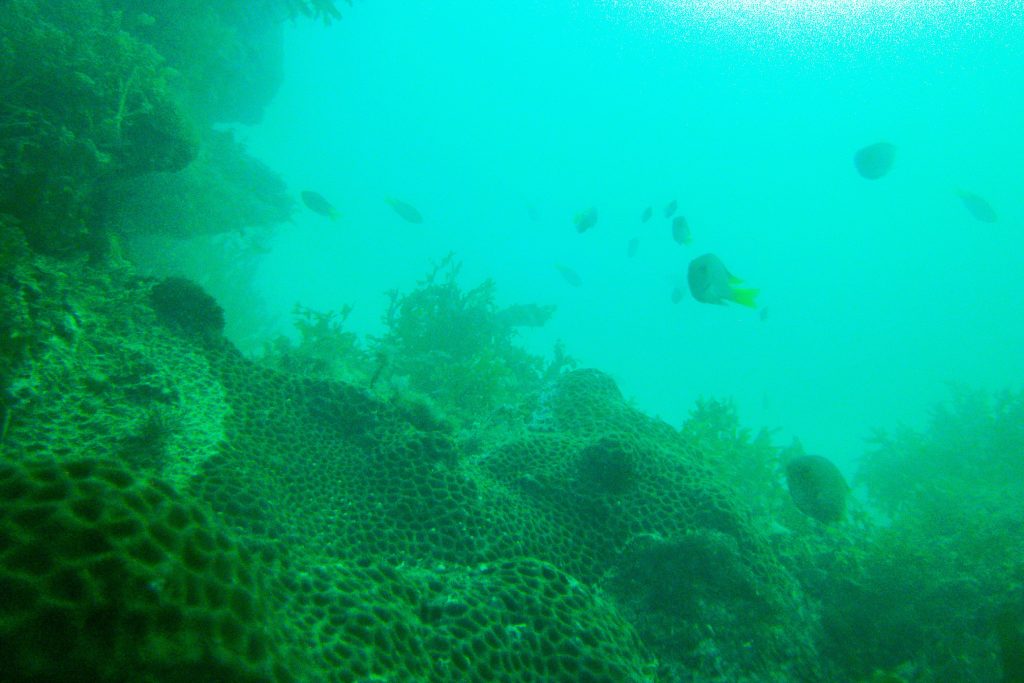
Coral reef of Mithapur | Photograph by s. Goutham/WTI
200 fishing families were regularly mentored in reef conservation through periodic meetings and workshops involving experts from the Coast Guard, the Fisheries and Forest Departments. More than a hundred meetings, both small and big, were conducted with the fishers between 2004 and 2023. Further, the project reached out to more than 1500 students from coastal schools through various awareness programmes.
WTI’s project team also trained 10 youth representatives from the local fishing community in reef monitoring techniques using line intercept transects, collecting benthic samples and fishery related data. This initiative was aimed to create a workforce within the fishing community capable of sustaining the monitoring component of the project even after the project’s tenure concluded.
Friendships for conservation in Mithapur
By the time we started creating artificial reefs, I was able to establish a camaraderie with most of the local fishers. This was owing to the fact that I was employing them as daily wagers during the peak field season (October-March) each year, for loading and unloading limestone and basalt rocks which form the base material for artificial reefs. Since 2014, we have created 1910 modules of artificial reef (as of 2022-23) by stacking limestone and basalt rock in a conical manner with a basal diameter of 1m and a height of 1m. This effort has added 4851 sq.m of additional hard substrate. The core idea behind artificial reefs of to provide coral larvae with additional hard substrate to settle down and develop into full grown colonies.
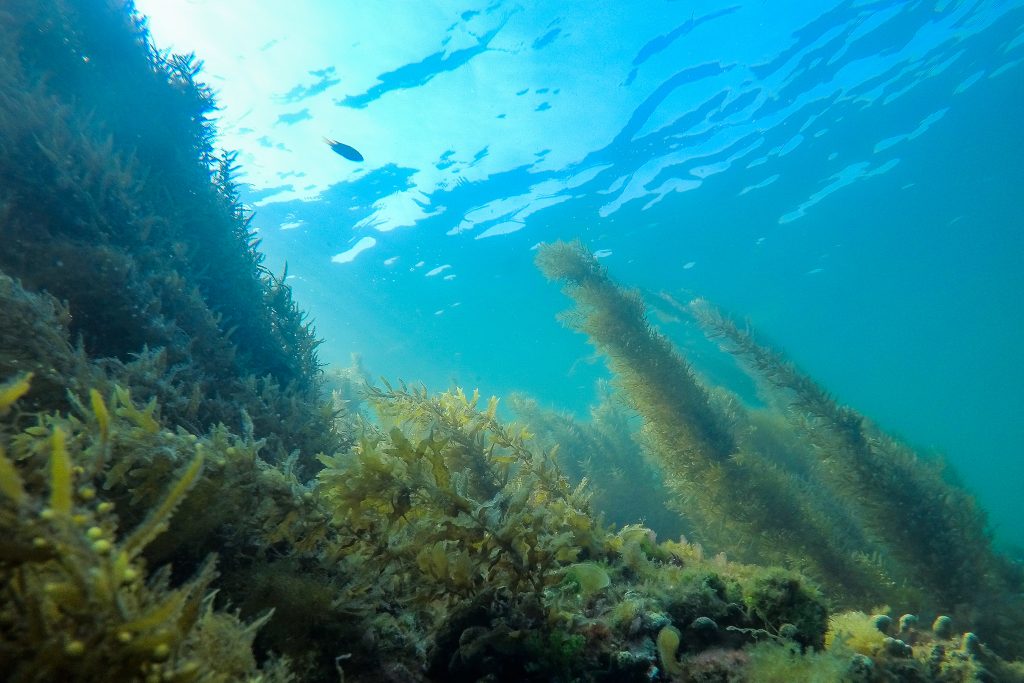
Mithapur Coral Reef | Photograph by Madhumay Mallik/WTI
During one of my regular visits to the local fish market, I was interacting with Javed, one of our main supporters from the fishing community, when he revealed that he was able to get higher catch from the areas where artificial reefs were placed. While this outcome was expected, I did not anticipate such rapid results just two years after starting the artificial reef project (in 2016-17). This prompted me to re-evaluate the catch dynamics of the region and also to look into the population density of reef fishes.
I immediately designed surveys to assess the fish catch of the region, in comparison to three other nearby reef regions (Arambhada, 4km north of Mithpaur, where a similar reef restoration project was in place but without an artificial reef component. Shivrajpur, 10 km south of Mithapur, where the reef is evidently healthy with good live coral cover and a good amount of fish; and Mojap, 5km south of Mithapur, with a predominantly featureless bottom, taken as a control site. I was expecting a higher catch from Shivrajpur due to its healthier reef, but, what surprised me the most was Mithapur was yielding a greater fish catch (kg per 1hr per 100m long bottom-set gill-net) from shallow sub-tidal waters of the reef. Not only was the fish catch from Mithpaur on a constant rise, but we were also able to document a steady six-fold growth of fish catch.
Surveys to document population dynamics of reef fishes from Mithapur, through the point-rover technique, revealed that artificial reefs had a major role to play in fish concentrations. The artificial reefs placed closer to the natural reef had more fish density (4.26 fish/m2) than those which were placed away from the natural reef (3.47 fish/m2). The studies also revealed that almost 86% of the fish diversity found over the natural reef was found over the artificial reefs.
I was thrilled with the positive outcome of our efforts. When I shared my findings with the fishing community, they were delighted to learn that the project was genuinely boosting their livelihoods. It was at this moment that I carefully put across my idea of closing down parts of the reef and declaring them as no-take zones for fishing, a concept that was not present anywhere in the country outside of a notified protected area. To my surprise, the community members unanimously pledged their support. Subsequently, we demarcated two areas of 500 sq.m each, on an experimental basis, to better understand the socio-environmental dynamics associated with establishing restricted areas in the sea. Once we were certain that reef dependent fishers, who were the primary stakeholders of the project were comfortable with the concept being implemented on the ground, we designated two areas of 50,000 sq.m each in the years 2020-21 and 2021-22.
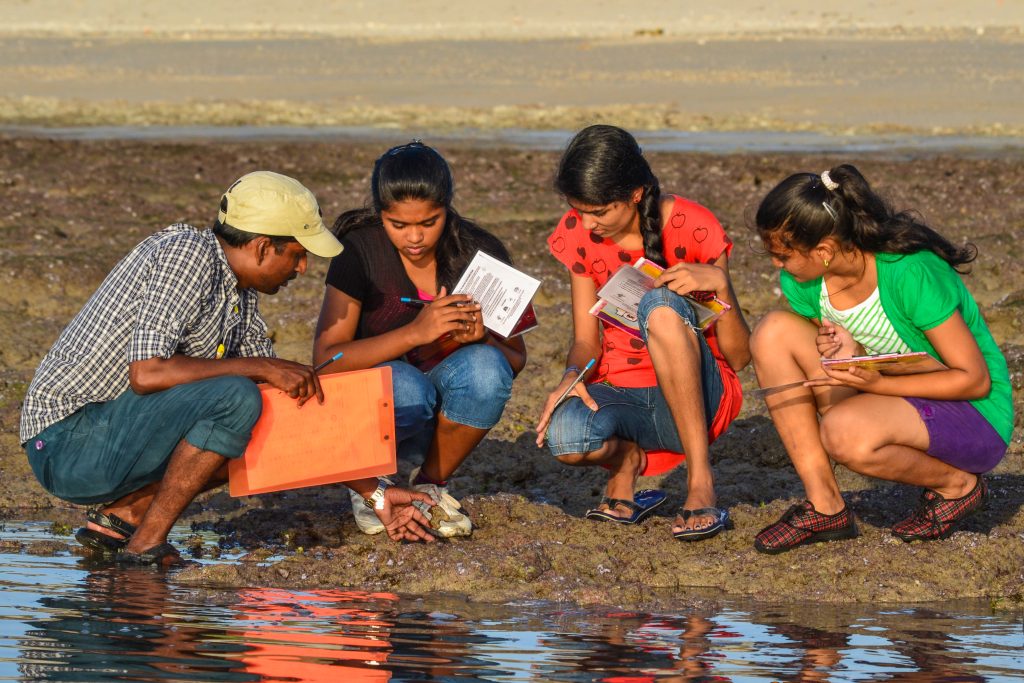
Coral reef monitoring by TCL volunteers | Photograph by Altaf Bhaya/WTI
A reef for all
Mithapur is also the birthplace of Tata Chemicals. Its importance stems from its massive salt reserves. Due to this, it has become the centre of salt and soda ash production in India. But the abundance of a natural resource didn’t alone account for its 70-plus years’ success. Tata Chemicals has been supporting conservation initiatives like our Mithapur Coral Reef Recovery project since its inception. In addition to involving fishing communities, the project also roped in members of the TCL family in various awareness campaigns such as coastal clean-up drives and coral health monitoring programmes. To date, more than 100 members from the TCL family have actively participated in these events. Personnel from the Indian Navy and Coast Guard have also participated in field activities such as artificial reef creation. A reef, such as in Mithapur, is a direct reflection of how we are able to manage our important ecosystems. Consequently, it becomes the responsibility of all to ensure that these underwater rainforests remain protected and can play their part in healthy ecosystems.
by B.M. Praveen Kumar

